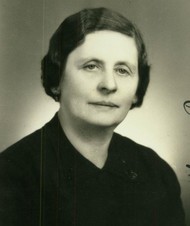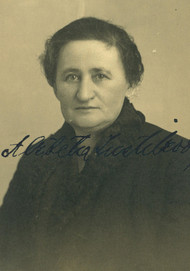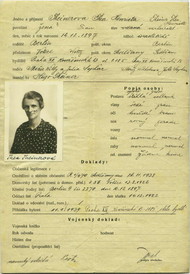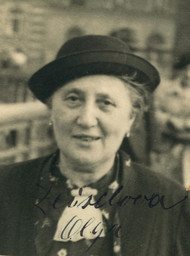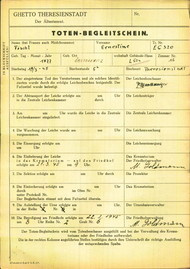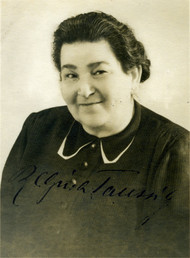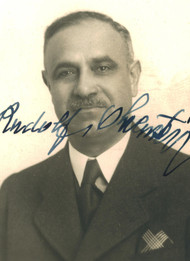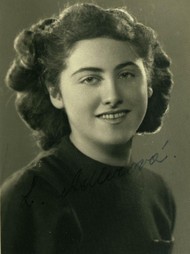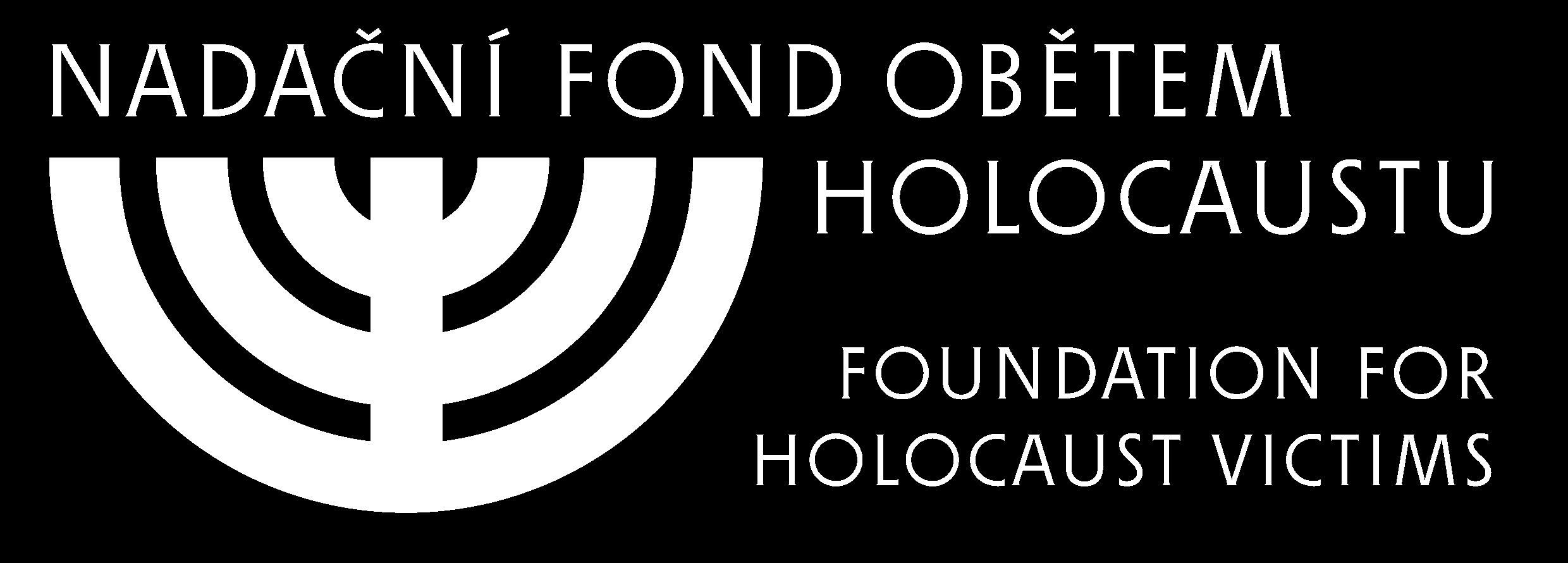Key and copyright. (In Czech)
The construction of the concentration camp at Sachsenhausen, some 35 km north of Berlin, began in the summer of 1936. In August and September 1938, 900 prisoners were deported there from Esterwegen to continue the construction of the camp. The camp was ready by the end of September, and the first political prisoners were sent there.
In addition to wooden huts for prisoners, the camp also had brick houses for SS members and several factory halls where the prisoners were used for slave labour. Before the Second World War broke out, most of the prisoners in Sachsenhausen were German Communists and Jews. Over 6 000 people described by the German authorities as asocial
were sent there. Immediately after Kristallnacht, in November 1938, 1 800 Jews were sent there, being murdered over the following weeks.
Sachsenhausen prisoners in the dining room, 1939-1940 (Photo: Gedenkstatte und Museum Sachsenhausen, courtesy of USHMM Photo Archives.)
In November 1939, the number of prisoners in Sachsenhausen exceeded 11 300. Hundreds of prisoners died as the result of a typhus epidemic and the refusal of medical aid to the sick. The corpses were initially taken to the crematorium in Berlin; it was only in April 1940 that a crematorium was set up in the camp itself. Executions were a daily occurrence. Shortly after the invasion of the Soviet Union, thousands of Soviet prisoners of war were sent to Sachsenhausen, most of them being shot, hung or beaten and starved to death. In autumn 1941, the effects of the gas wagons were tested on the prisoners in Sachsenhausen ahead of its planned use in the east.
After 1938, the composition of the prison population began to change, with those imprisoned for racial reasons beginning to outnumber political prisoners. Its closeness to Berlin meant that Sachsenhausen was destined to become a centre for the whole apparatus governing the Nazi concentration camps. It was the headquarters of the concentration camps inspectorate. As a model and training camp for the SS, it also served to train future camp functionaries and commanders. Sachsenhausen's commanders were Hermann Baranowski, Hans Loritz, Walter Eisfeld and Anton Kaindl.
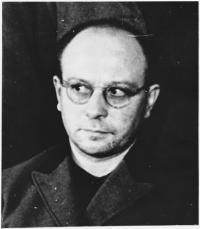
Anton Kaindl on trial in Berlin, 23rd of October - 1st of November 1947. (Photo: Archives of the Federal Security Service of the Russian Fed., courtesy of USHMM Photo Archives.)
In January 1942, the prisoners, on SS orders, began to build the Station Z
, designed for the extermination of prisoners. On the 29th of May 1942, with high-ranking Nazi officials in attendance, the facilities were put into operation. To illustrate its effectiveness, 96 Jews were shot there on that day. In March 1943, a gas chamber was added to Station Z
, and was used until the end of the war. It is not known how many people fell victim to this gas chamber, since the transports designed to be gassed did not undergo registration procedures.
Large companies built factories close to the camp so that they could use the prisoners' slave labour. They included AEG, Siemens & Halske, Heinkel Flugzeugwerke, IG Farben and Daimler Benz Werke. Sachsenhausen had approximately 100 auxiliary camps and external commandos. Among the best-known was the Schuhläuferkommando
, in which prisoners had to walk along a marked track all day in order to stress-test materials suitable for army footwear. A much-feared penal camp was Klinkerwerk, where the prisoners made bricks for the future development of Berlin according to Albert Speer's plans. Prisoners were later used to produce grenades there.

Prisoners with triangles standing at muster, 1938 (Photo: National Archives, courtesy of USHMM Photo Archives.)
At the start of 1945, the number of prisoners dramatically increased, in connection with the Allied advance. In April 1945, orders were given for the evacuation of the 33 000 remaining prisoners, who set out on a death march northwards towards the sea in groups of 400. The Nazis' aim was to put them on to a ship and then sink it. Over six thousand prisoners died on the death march before it was liberated near Schwerin by the Soviet and US armies.
Approximately 3 000 prisoners, 1 400 of them women, remained in the camp and were liberated on the 22nd of April 1945 by Soviet soldiers. As in other camps, many former prisoners continued to die of the results of their imprisonment for a short time after liberation, despite the medical care that they received.
During the camp's existence, more than 200 000 prisoners passed through it, out of whom 30 000 to 35 000 were killed there.
-
Links:
-
Sachsenhausen Memorial. (German).
-
Sachsenhausen on the Jewishgen website, plus an extract from the testimony of A. Kaindl.
-
Information on Sachsenhausen on the German Historical Museum's website. (German).
-
Literature:
-
Burger, Adolf. Ďáblova dílna. Praha: Svoboda, 1991. 269 s.
-
Kühle, Barbara a Kühn, Raine. Konzentrationslager Sachsenhausen. Berlin: Landeszentrale für politische Bildungsarbeit Berlin, 1990. 48 s.
-
Morsch, Günter a Reckendrees, Alfred. Befreiung Sachsenhausen 1945. Berlin: Edition Hentrich, 1996. 150 s.
-
Kulisiewicz, Aleksander. Adresse: Sachsenhausen: Literarische Momentaufnahmen aus dem KZ. Gerlingen: Bleicher, 1997. 183 s.


